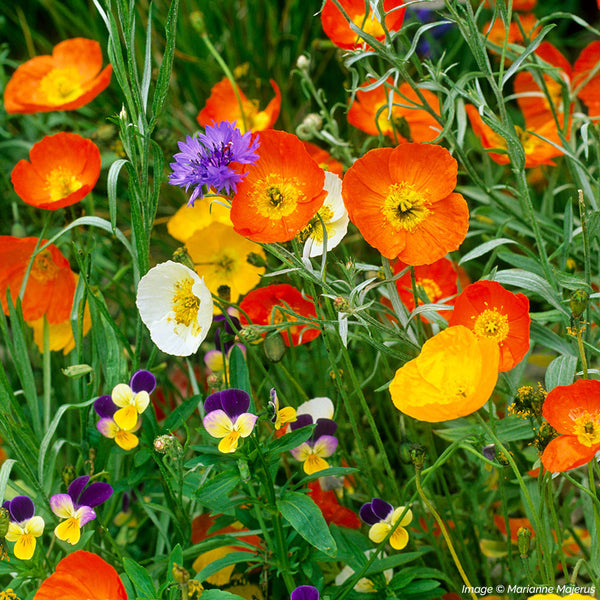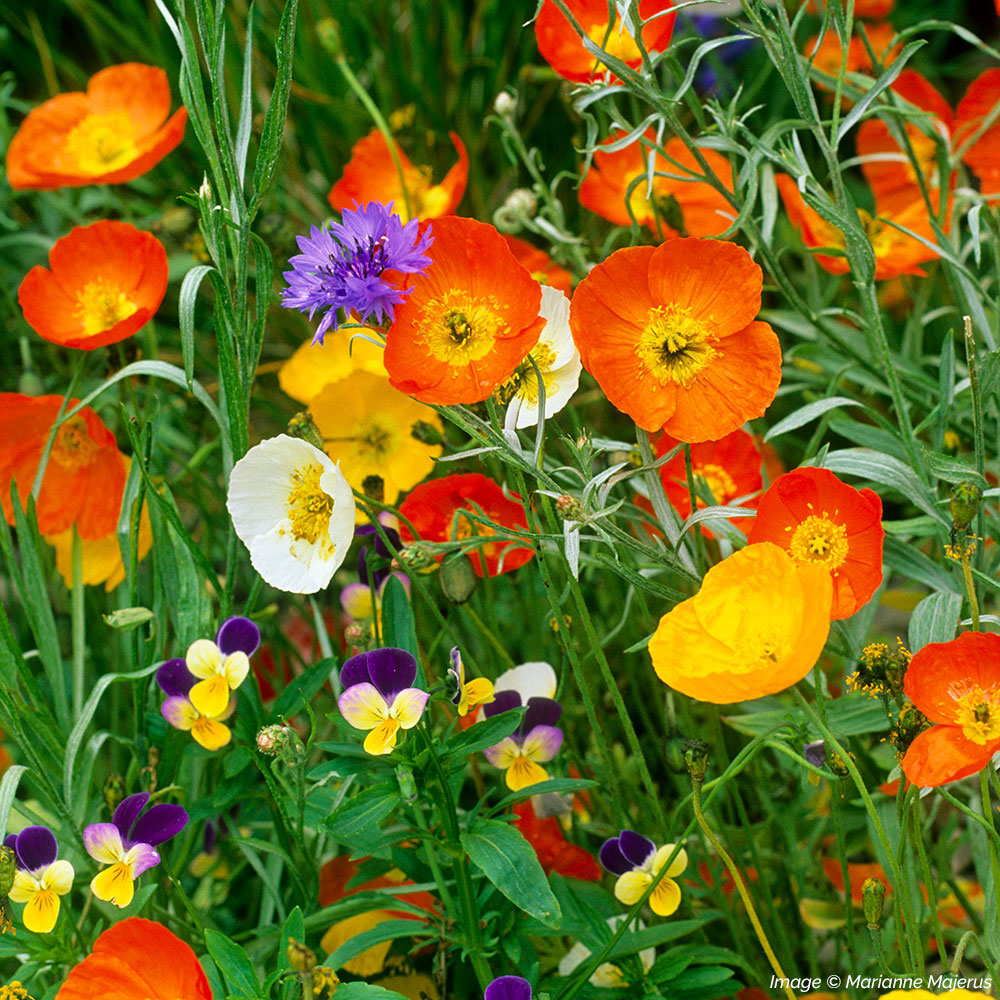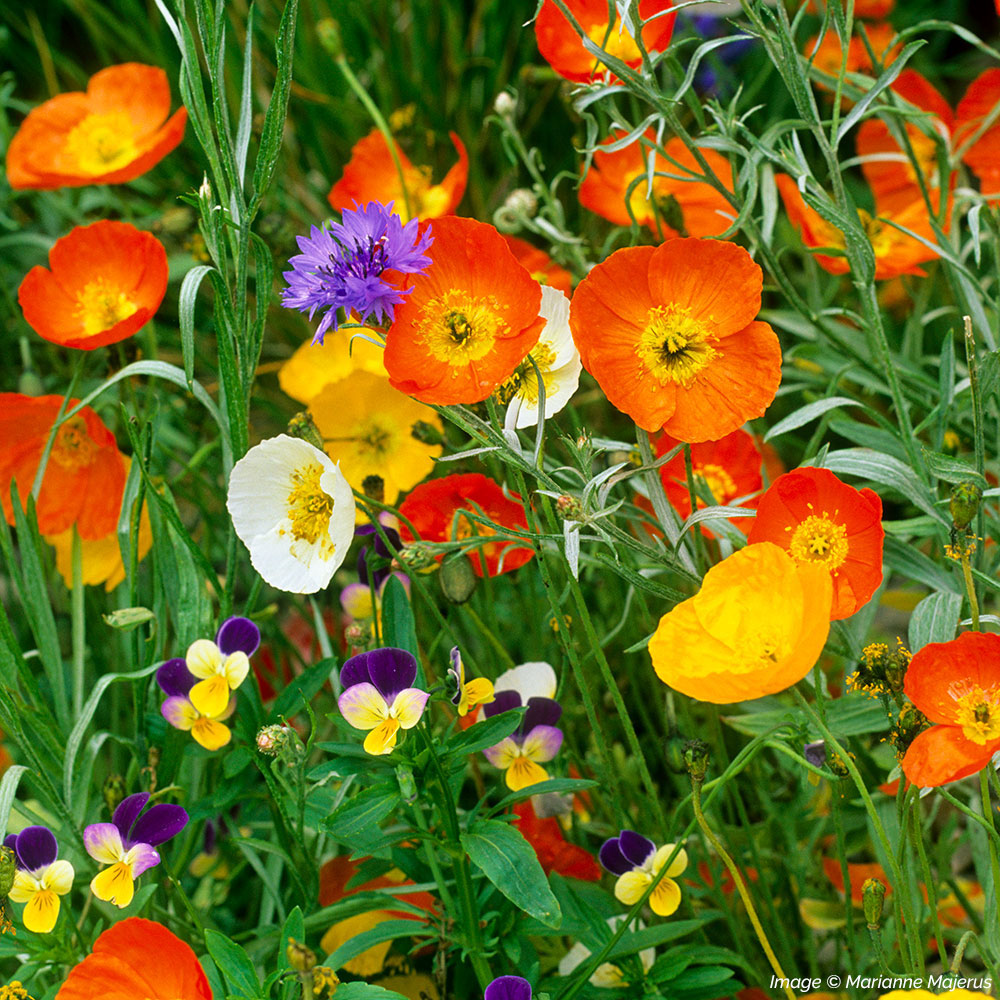Seed Packet
Poppy - Iceland 'Champagne Bubbles Mix' F1
Papaver nudicaule
Iceland poppy 'Champagne Bubbles Mix' silky flowers are borne on slender, curvy stems; the delicate, crinkled, cup-shaped flowers found in clear shades of white, orange, pink, and yellow. May to June bloom, when they cavort with violas, forget-me-nots, Canterbury bells, and other flowers of spring.
SKU #S1868
































